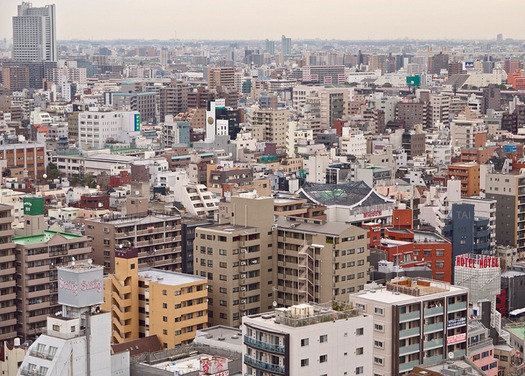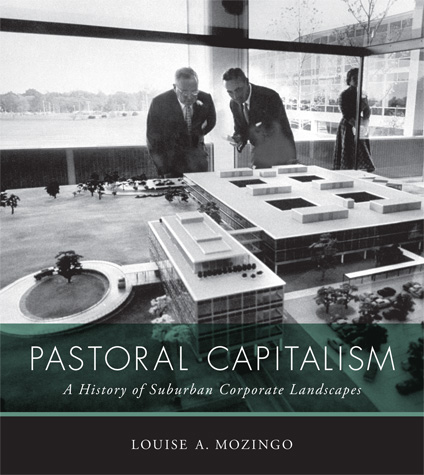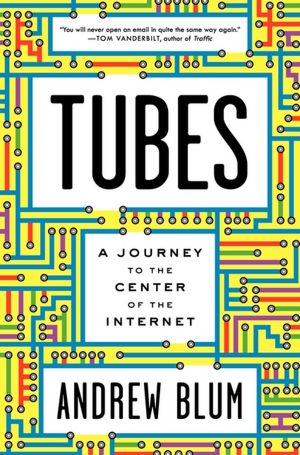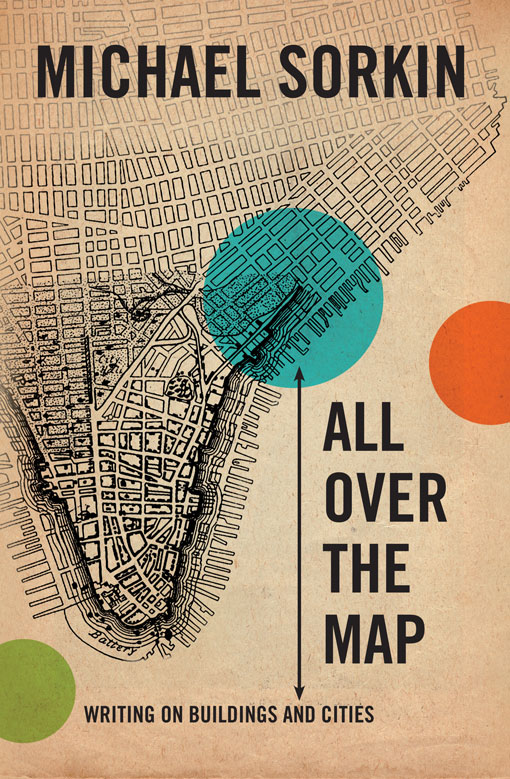
Tokyo. Photo: P.D. Smith
There are some 500,000 security cameras in London. There are 130,000 street vending stalls in Kolkota. The Egyptian hieroglyph for city is a circle (walls) with a cross through it (roads meeting at a market). These are just a few of the facts you will find in P.D. Smith's encyclopedic new book, City: A Guidebook for the Urban Age, along with capsule histories of not only the elements of the physical city (subways, parking meters, skyscrapers) but also of the sundry other defining subjects that make metropolitan culture (language, dining, immigration, race, crime, finance). It is a magnificent achievement, broad is scope but absent the kind of stuffy academicism that sometimes afflict such books. To follow is a conversation with Smith about the making of the book, followed by some additional suggestions for your summer reading list.
ML: I suppose it should not be a surprise that an Englishman would open a book about cities with an epigram from Shakespeare, "What is the city but the people." I find that writers on architecture and urbanism too often forget this, because we love to talk about buildings and cities as objects, and that this in turn is why people tend not to read books about architecture. You avoid this trap, however. Was this a conscious strategy, or something you were concerned about as you were working?
PDS: Yes, this idea was very much at the forefront of my mind as I was writing City. It was never my intention to write an architectural history. Cities are much more than the sum of their architecture or infrastructure. A city is made great by its people. Nevertheless, you cannot ignore the structures and spaces of a city. Winston Churchill once famously said: “We shape our buildings and afterwards our buildings shape us.” Our urban environments undoubtedly shape us as people. That’s why between each of the eight sections in the book there are essays on more concrete features of the urban landscape, such as the Central Station, the City Wall, the Skyscraper or even the Ruins. But I hope that even here I don’t lose sight of the people who use these architectural spaces. After all, they are the life-blood of the city.
ML: Organizing the book in the form of a guide is a real stroke of genius. Was this your concept to begin with, or was it a format that you arrived at after considering a more traditional history? How hard was it to choose the sections? Were there any that you had to cut, or that you wish you could have included?
PDS: Thank you – I’m glad you like it. The concept of writing a book split into segments was there right from the start. The city is such a vast subject. The idea of approaching it through a linear narrative, as I did in my previous book, was just too daunting. While researching Doomsday Men, I had been impressed by Sven Lindqvist’s A History of Bombing. In this the subject is broken down into brief numbered passages. The reader can follow different pathways through the book. At first I played around with the idea of organizing my book like a subway system, with a plan at the front modeled on the London Underground map. The reader could have followed, say, an Infrastructure line, with essays on topics such as sewers and electrification, for example. But in the end I decided to base it on a guidebook. The genre of the city guide has been around for centuries. Readers are familiar with it and it opens up the city both as an idea and a physical reality. It’s also a loose structure, one that allows people to wander, as they would in a real city. I rather like that idea. Yes, deciding which essays to include was horribly difficult. If I had followed my original list, the book would have been twice as long. The guidebook structure helped narrow my focus. Topics such as street painters and calligraphers, secret cities and urban myths all fell by the wayside. Urban history is so rich that the list of possible topics is virtually infinite. It’s a subject of truly Borgesian extent.
ML: Regarding that rich history, I noted that one of your primary suggestions for further reading is Lewis Mumford's "The City in History," which is one of my favorite books, and largely forgotten, in part because it came out in the same year as Jane Jacobs's "Death and Life." I wonder if there were any other historical "gems" that you might have come across in your research, works that you may not have known about but came to value or just enjoy reading?
PDS: Yes, Mumford’s study is immensely impressive and was useful in the early stages of my research, as indeed was Jane Jacob’s classic work. Both are of their time but still offer insights. Jonathan Raban’s Soft City (1974) is a wonderfully evocative exploration of the “continual creative play of urban living”. On architecture, Sigfried Giedion’s Space, Time and Architecture, which was first published in 1941, is still fascinating. From the same decade, Harry Granick’s Underneath New York (1947) is a classic study of urban infrastructure. Cities of Destiny, a collection of essays from 1967, edited by Arnold Toynbee, is an impressively large-format book which gave me a sense of how different types of illustrations could be used to bring the subject alive. More recent than any of these but an undoubted classic of urban studies, is Peter Hall’s remarkable Cities in Civilization (1998) which is packed with insights into the boundless creativity of cities. I love old city guides and two I bought early on were Valentine’s Manual of the City of New York, 1917-18 and the New York Standard Guide which cost 25 cents in 1917. Whenever I read them, I step back nearly a century and can vividly imagine walking round Manhattan in 1917 - “The Metropolis of the Western World”, as it was described, and the archetypal vertical city of the 20th century.
ML: Inequality, poverty, and corruption are the traditional plagues to the city. But you isolate the growing specter of surveillance, and I would add an increasing corporatization of public space. How are these factors changing the way we inhabit cities?
PDS: Certainly in British towns and cities, Jane Jacobs’ “eyes on the street” have morphed into camera lenses. The land of George Orwell’s Big Brother has more surveillance cameras than the rest of Europe combined. The militarization of our cities is a depressing feature of urban life in the twenty-first century. As you say, it is often accompanied by the privatization, or corporatization, of public space. People are increasingly stopped from taking photographs or holding peaceful demonstrations in what city dwellers assume to be public areas. This, as well as the use of private security forces to police these spaces, is a retrograde step. It reminds me of the way London’s affluent Georgian squares were cut off from the rest of the city in the nineteenth century by gates manned by private armed guards. Of course, gated developments are also a feature of modern urban life, often sited next door to slums and favelas. This balkanization of urban life is the physical manifestation of the growing inequality of our cities, which I believe is one of the most pressing problems facing cities in the developed and the developing worlds. Increasing inequality and the creeping militarization of cities threaten the foundations of urban life. Carved above the gateways to the cities of the Hanseatic League were the words “Stadtluft macht frei” – city air sets you free. It’s a beautiful idea. But how free are you if surveillance cameras track your every move through the city’s streets? And are today’s divided cities trapping the majority in poverty, rather than setting them free?
ML: As the center of urban gravity shifts eastward, what are the challenges facing cities in the West? Is it the fate of every great city to eventually turn into a museum of itself?
PDS: Ultimately, even the greatest cities return to the dust out of which they emerged. “All that is solid melts into air.” The earliest cities, such as Uruk, are now just wind-swept artificial hills in the landscape. It’s a chilling thought. That’s why I ended my book with an essay on Ruins. No city retains its dominance for ever. Babylon, Mohenjo-daro, Athens, Rome, Chang’an, Tenochtitlán, Venice, London, New York – it’s a litany of urban greatness. All have enjoyed their moment in the sun. But this heyday passes and then, as you say, all that remains are memories and crumbling edifices. Undoubtedly, power is shifting to the East, to cities like Shanghai. In 1980, Shanghai had 121 buildings taller than eight storeys. By 2005, there were more than 10,000. The growth and construction that happened in New York from 1880 to 1930 have happened in Shanghai in less than twenty years. It is an astonishing city. Western cities don’t have to copy Shanghai, but if they are to survive as more than tourist attractions they need to remain places of opportunity and vision, places where dreams are made and desires fulfilled. This has always been the key to urban success.
ML: You live in Winchester, England, a lovely small city but hardly a metropolis, so perhaps an unexpected choice for a historian of the city. (Mumford, for what it's worth, lived in a bucolic rural town several hours from New York.) Why did you choose that place, as opposed to a major metropolis?
PDS: It’s true that Winchester is no metropolis, although I don’t think size is necessarily a measure of urban greatness. I grew up in London’s suburbs and until six years ago I lived close to the center of London. If I could afford to buy a house there with the amount of space we need, then I would still be living there. But I can’t and so we moved out. I didn’t want to go back to the suburbs, so I came to Winchester, partly for family reasons, but also because it’s just an hour from the center of London by train. We live very close to the center, so more or less everything is within walking distance. And although it’s small – too small even – it has also been fascinating for me to see how many of the themes I explore in the book are reflected in the more than two-thousand-year history of this cathedral city, which was once the capital of England. Another example, perhaps, of how every city’s star wanes over time.
ML: A final question: Given the opportunity to live in any of history's great cities in their respective heydays, where would you go?
PDS: Berlin in the so-called Golden Twenties. It was a deeply troubled city that had experienced the hyperinflation of 1922-23, when newspaper presses were used to print banknotes. There were regular street battles between the Nazis and the Communists. But paradoxically it was also an incredibly dynamic city, attracting some of the era’s greatest artists, writers, scientists and filmmakers. It was a concentration of talent that has never been equaled in Europe. Albert Einstein went there, as did Leo Szilard, the scientist who first realized how to unleash the power of the atom. Bertolt Brecht was there and the opening of his and Kurt Weill’s The Threepenny Opera in 1928 became a night people remembered all their lives. The Berlin artist George Grosz used to walk the streets with a sign reading “Dada über Alles”. Dressed as an American cowboy with boots and spurs, he was a regular at Szilard’s favourite café, the Romanisches Café, across from the Kaiser Wilhelm Memorial Church. It was the city of Alfred Döblin, whose modernist novel Berlin Alexanderplatz (1929) is one of my favorite depictions of big city life. His novel echoes with the lost sounds and sights of Berlin: faces glimpsed amongst the crowds, snatches of conversation, phrases from songs and advertising hoardings, newspaper headlines, the rattle of trams in Berlin’s streets, and the squeals of dying animals in Berlin’s vast new slaughterhouse. It was also a city of celluloid dreams, where the film studio Ufa was based and where Fritz Lang made his futuristic urban fantasy, Metropolis. With its smoke-filled jazz clubs and seedy cabarets, Berlin briefly became the cultural capital Europe, attracting English writers such as Stephen Spender, W. H. Auden, and Christopher Isherwood, whose Berlin Stories became the unforgettable film, Cabaret (1972). Berlin’s heady mix of danger and creativity encapsulates everything that makes urban life so endlessly fascinating and alluring.




Also Recommended
Patoral Capitalism, by Louise Monzingo (MIT Press). I'm halfway through this book on the history of suburban corporate offices, and I am already convinced this will be a book that will be a defining book for many years to come. Monzingo writes with incisive clarity about the causes and implications of the move of corporations to pastoral settings from urban centers in the postwar years. This 1960 quote from Fortune magazine in 1960 is particularly telling: "New York is an increasingly Negro and Puerto Rican city. Some companies are reluctant to hire a large proportion of Negro and Puerto Rican help." But this is really just a small part of a fascinating story, and one that continues today.
Tubes, by Andrew Blum (Ecco). Andrew is a good friend, so I will refrain from too much encomium here, and merely suggest that this book about the hidden physical infrastructure of the Internet is something everyone who uses the Internet (which is to say, everyone), should read. As our world is ever more dominated by information, it's ever more important to know how that information is controlled, by whom, and at what cost.
All Over the Map, by Michael Sorkin (Verso). I've been meaning to put this up here for awhile. Sorkin is of course one of the pillars of contemporary architectural criticism, and this collection gathers his essays from 2000 to recent days, with most of the pieces drawn from Architectural Review. Although he is perhaps less visible to the general public than he was in his days at the Voice, he is still fighting the good fight from the architectural barricades, and he can still make you laugh out loud, though he is more likely to make you cringe with some dispiriting assesment on the state of urban affairs. (In particular, the bilious Ground Zero machinations Ground and the ever-increasing corporatization of the city.) Also, it is often forgotten, when he comes across work he respects, there is no one more generous, and his love for the discipline really shows.
